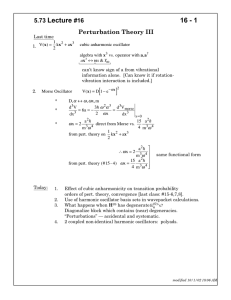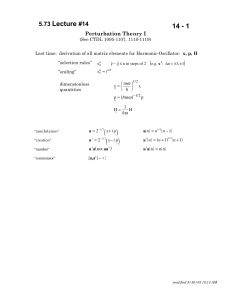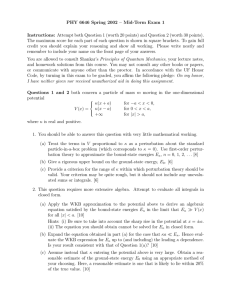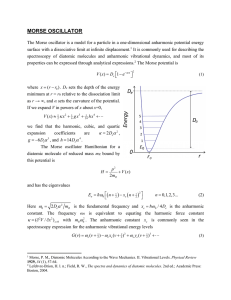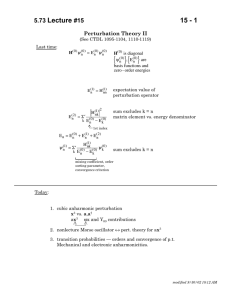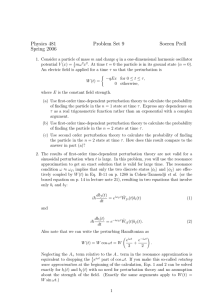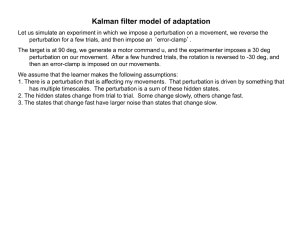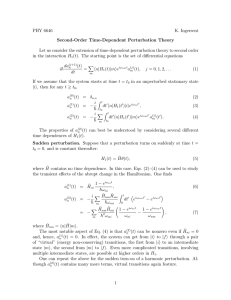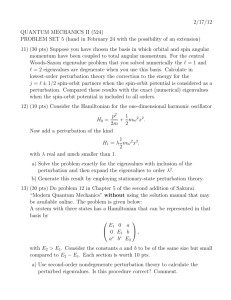5.73 Lecture #15 15 - 1 Perturbation Theory II (See CTDL 1095
advertisement
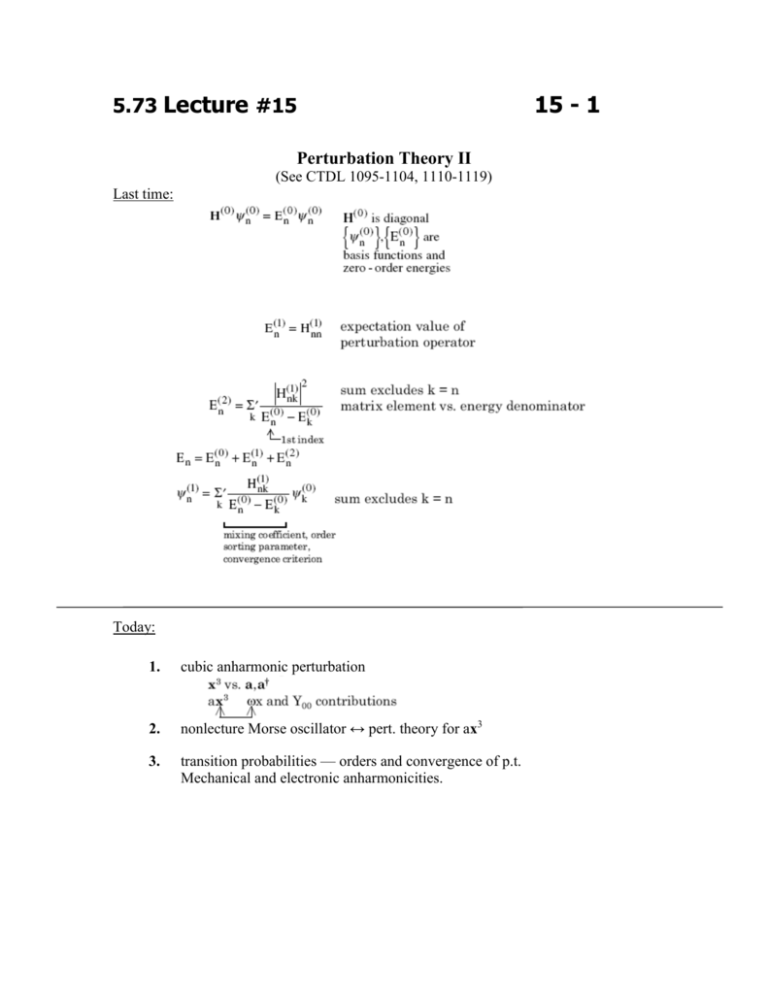
5.73 Lecture #15 Perturbation Theory II (See CTDL 1095-1104, 1110-1119) Last time: Today: 1. cubic anharmonic perturbation 2. nonlecture Morse oscillator ↔ pert. theory for ax3 3. transition probabilities — orders and convergence of p.t. Mechanical and electronic anharmonicities. 15 - 1 5.73 Lecture #15 15 - 2 need matrix elements of x3 one (longer) way x 3il = x x ij jk x kl j,k other (shorter) alternative: a, a†, and a†a four terms, four different selection rules. 5.73 Lecture #15 a,a† algebra Use simple rules by inspection. 15 - 3 to work out all matrix elements and selection goal is to rearrange each product so that it has number operator at right 3 n +1 (a †a †a + a † ) n = 3(n(n +1)1/2 +(n +1)1/2 )= 3(n +1)3/2 all done — not necessary to massage the algebra as it would have been for x3 by direct x multiplication! 5.73 Lecture #15 15 - 4 Now do the perturbation theory: all levels shifted down regardless of sign of a — can’t measure sign of cubic anharmonicity constant, a, from vibrational structure alone ax3 makes contributions exclusively to Y00 and ωexe 5.73 Lecture #15 15 - 5 Nonlecture Morse Oscillator via perturbation theory Our initial goal is to re-express the Morse potential in terms of ω and ωx rather than D and α. Then we will expand VMORSE in a Taylor series and look at the coefficient of the x3 term. First we must take derivatives of Ev with respect to v ≡ n + 1/2 now expand V(x) but 5.73 Lecture #15 15 - 6 a 3 4 m 15 a 2 from pert. theory (#15 - 4) x = 4 m3 4 x = 2 2 same functional form but different numerical factor (2 vs. 3.75) One reason that the result from second-order perturbation theory applied directly to V(x) = kx2/2 + ax3 and the term-by-term comparison of the power series expansion of the Morse oscillator are not identical is that contributions are neglected from higher derivatives of the Morse potential to the (n + 1/2)2 term in the energy level expression. In particular contributes in first order of perturbation theory to the (n + 1/2)2 term in En. Example 2 Use perturbation theory to compute some property other than Energy need n = n( 0) + n(1) to calculate matrix elements of the operator in question, for example, transition probability, x: for electric dipole transitions, transition 2 probability is Pn'n x nn' Standard result. Now allow for mechanical and electronic anharmonicity. 5.73 Lecture #15 15 - 7 Many paths which interfere constructively and destructively in x nn' 2 The transition strengths may be divided into 3 classes 1. direct: n 2. one anharmonic step n → n + 4, n + 2, n, n – 2, n – 4 3. 2 anharmonic steps n → n + 7, n + 5, n + 3, n + 1, n – 1, n – 3, n – 5, n – 7 Work thru the Δn = –7 path 5.73 Lecture #15 15 - 8 you show that the single-step anharmonic terms go as Direct term m3a 2 2 3 3 5 3 2 m each higher order term gets smaller by a factor which is a very small dimensionless factor. RAPID CONVERGENCE OF PERTURBATION THEORY! What about Quartic perturbing term bx4? Note that E(1) = n bx 4 n 0 and is directly sensitive to sign of b!

